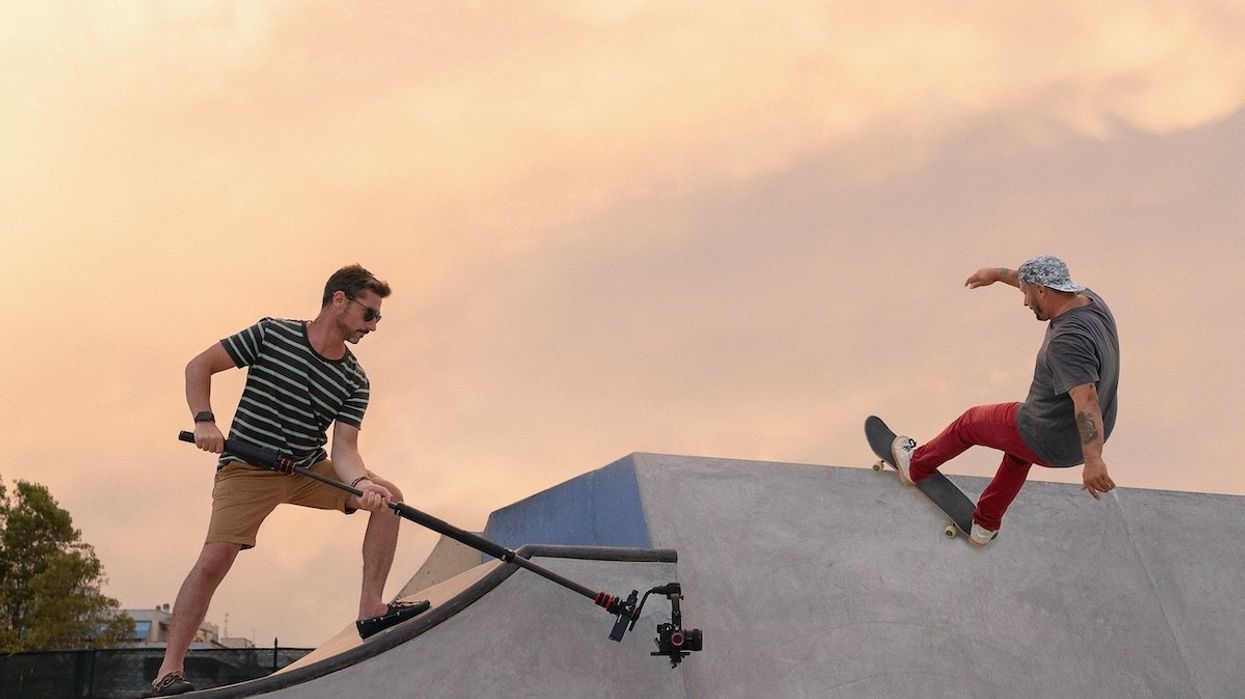You Can Get More Height with the Fast GimBoom
A stabilizer is only as good as where you put it, and the GimBoom from Manfrotto opens up a host of options.

One of the best things about a gimbal stabilizer is all the places you can put it with your own body. If you can get there as an operator, you can smoothly get the camera there too.
But one of the major limitations that leaves you with is the limits of your own height and arm length. If you want a shot to go higher, you need to stack up some apple boxes, which, as we've seen with the egg crate challenge, isn't always very safe. If you want the gimbal to fly out over a cliff or a balcony, or even a pool table, you're normally out of luck.
Manfrotto has solved that problem with their new GimBoom, a carbon fiber boom arm designed specifically for making working with a gimbal easier and more flexible.
Mount your stabilizer to the Fast GimBoom, and you can more easily skim the camera over the ground without having to bend over dramatically yourself. You can then swoop the camera up high over your head for another field of view. You can then walk over to a car and push the whole rig through an open window to end your shot on a close-up of the passenger.
All as a single operator with a single camera rig.
Combine it with the Move system, and you can bounce the camera over to a slider in seconds, as well.
It has threads at both ends, which make it perfect for mounting the 300XM at one end and the 300XM remote controller at the other end, which solves one of the biggest hurdles with boom mounting your stabilizer. With most stabilizers, the remote handle has to stay with the stabilizer unit, so you can't operate the pan, tilt, and focus from further away.
With the 300XM and GimBoom combo you can have the gimbal walk out in space, over a table or a cliff or in the air, holding onto the middle rubber section with one hand and the remote with the other, opening up shots you just can't get any other way.
The way the GimBoom has several accessory mounting ports opens up a whole host of options.
The most exciting one is to rig up a small monitor to get yourself a viewing port where you can see the image you are shooting. Since you'll be operating from the end of the boom, it's vital to have a clear view of what you are shooting, and it's great that Manfrotto has thought through the whole capture process and designed a system that allows for this kind of support.
In addition, there is an available "bi-pod" system that you can mount to the accessory ports as well so you can set the GimBoom down no matter how much rigging you've done to it. This is an exceptionally considerate design and shows the real research that has gone into the product.
If you've ever worked as a Steadicam or gimbal operator, you know having a safe way to dock the rig is always essential in doing your best as an operator, and this kind of touch shows they are talking to users and taking that feedback into account. The legs fold up nicely for small packaging, and the whole setup can be removed quickly for shots where it might get in the way.
The carbon fiber construction makes the whole unit exceptionally lightweight, coming in at only 1.76lbs, while still offering a full 14-pound payload capacity.
Both the top thread and the bottom thread are set up for both 1/4-20 and 3/8" mounting, which increases the flexibility of the units you can use this with. This makes it perfect not just for mounting a gimbal, but also for thread mounting a light, for instance, for a long walk-and-talk scene.
While not every gimbal shot is going to need a boom move, there are a lot of other tasks this kind of tool will find itself doing on set.
















